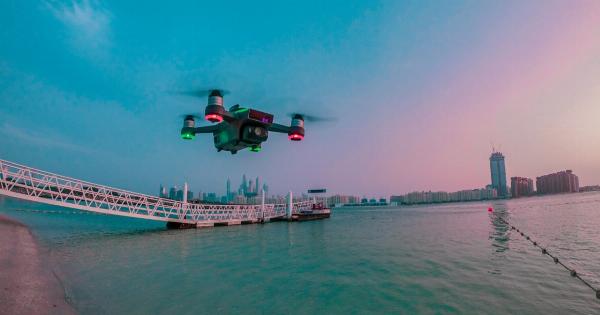In the world of aviation, technology has continually evolved to enhance safety, efficiency, and overall performance. One of the most remarkable advancements in this field has been the utilization of plastics in aircraft construction.
While it may come as a surprise to many, plastics play a crucial role in modern aviation, contributing to improved fuel efficiency, weight reduction, and design flexibility.
The Rise of Plastics in Aviation
Plastics have gradually made their way into various components of aircraft, replacing traditional materials such as metal and wood. This shift began in the mid-20th century, driven by the need to develop lightweight and durable alternatives.
As technology advanced, plastics revolutionized the aviation industry, offering numerous benefits that have propelled it forward.
The Benefits of Plastics in Aircraft Construction
1. Weight Reduction:.
One of the fundamental advantages of utilizing plastics in aircraft construction is weight reduction. Compared to metal components, plastics are significantly lighter.
This weight reduction directly translates into fuel efficiency, as a lighter aircraft requires less energy to remain airborne. Improved fuel efficiency not only saves airlines money but also contributes to a greener and more sustainable aviation industry.
2. Strength and Durability:.
Contrary to popular belief, plastics can exhibit exceptional strength and durability when engineered correctly.
Advanced composite materials, made from a combination of plastics, fibers, and resins, are now being used in critical aircraft components, including wings and fuselage. These composite materials offer higher resistance to fatigue, corrosion, and impact, ensuring the safety and longevity of the aircraft.
3. Design Flexibility:.
Plastics offer unparalleled design flexibility, allowing manufacturers to create intricate and aerodynamically efficient aircraft structures. Traditional materials like metal often limit design possibilities due to manufacturing constraints.
However, plastics can be molded into almost any shape, enabling engineers to optimize aerodynamics, reduce drag, and improve overall performance.
4. Reduced Maintenance Costs:.
The exceptional durability of plastics in aircraft not only contributes to safety but also helps reduce maintenance costs. Plastic components require less frequent inspections and replacement compared to their metal counterparts.
This results in significant cost savings for airlines as maintenance and downtime are minimized while ensuring operational readiness.
Applications of Plastics in Aviation
1. Interior Components:.
Plastics have a significant presence in the interior of aircraft, where their versatility is showcased. From seatbacks and tray tables to overhead compartments and window frames, plastics are used extensively to enhance passenger comfort and safety.
The lightweight and durable nature of plastics also contribute to maximizing available space, allowing for more efficient cabin layouts.
2. Wing and Fuselage:.
The wings and fuselage of an aircraft are crucial components that require both strength and lightness. Plastics, particularly composite materials, have become the preferred choice for these components.
Carbon fiber reinforced polymer composites, for example, provide an optimal balance between structural strength and weight reduction.
3. Engine Components:.
Plastics play a vital role in engine components, where their ability to withstand high temperatures and harsh conditions is critical. Heat-resistant plastics protect sensitive engine parts and ensure optimal performance.
Additionally, the use of lightweight plastics in engine components contributes to increased fuel efficiency.
Future Possibilities and Innovations
The use of plastics in aviation continues to evolve, with ongoing research and innovation pushing the boundaries of what is possible.
One area of focus is developing new materials that are even lighter, stronger, and more resistant to extreme conditions.
Another exciting avenue is the exploration of 3D printing technology. Additive manufacturing enables the creation of complex parts with precise geometries, reducing waste and streamlining the manufacturing process.
Plastics, with their moldable properties, are ideal for 3D printing, allowing for the rapid production of customized aircraft components.
The development of sustainable and eco-friendly plastics is also a significant focus in aviation.
As the industry seeks greener alternatives, efforts are being made to create plastics from renewable sources or materials that can be easily recycled, reducing their impact on the environment.
The Surprising Future of Plastics in Aviation
As aviation technology progresses, plastics will continue to play an integral role in shaping the industry.
The utilization of lightweight plastics, composite materials, and innovative manufacturing techniques will drive advancements in fuel efficiency, safety, and sustainability. The surprising truth is that plastics have become an essential ingredient for flight, revolutionizing aviation in ways that were unimaginable just a few decades ago.





























